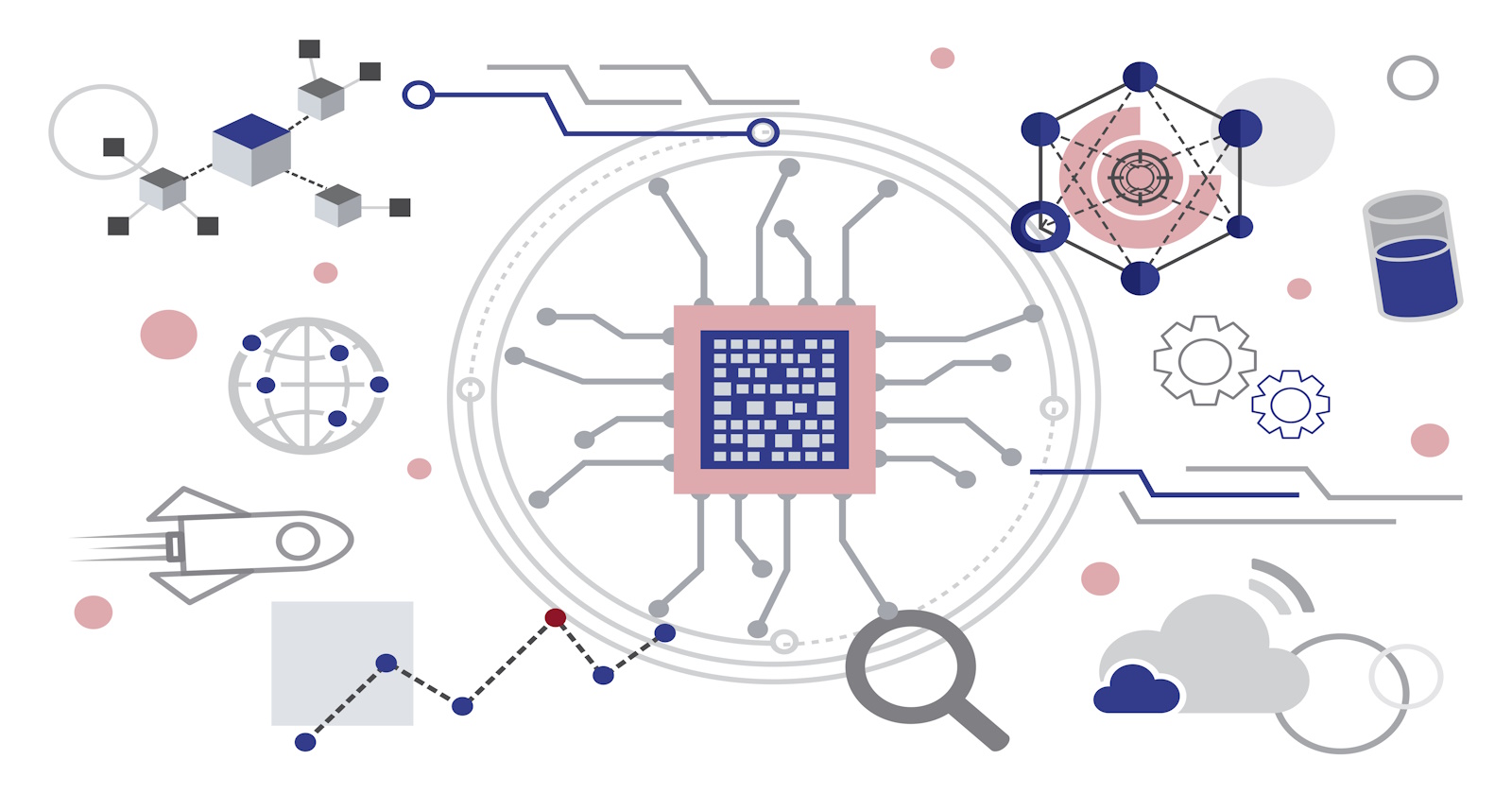Navigating the .NET Ecosystem: Tools and Techniques for Modern Software Development
 Arjun Solanki
Arjun Solanki
The .NET ecosystem is a powerful, flexible, and robust framework designed to cater to the diverse needs of modern software development. It offers a collection of tools, language support, and libraries that enable developers to build a wide range of applications - from simple desktop programs to complex web applications and services. Navigating this ecosystem can seem daunting due to its vastness and the constant evolution of its components. This guide aims to provide an in-depth understanding of the .NET ecosystem, its key elements, and how they can be effectively utilized in modern software development. As we delve into the details, we'll explore the structure and components of the .NET Framework, .NET Core, and .NET 5, the tools necessary for .NET development, and techniques integral to building applications using this framework.
The .NET Framework
The .NET framework, launched in 2002, has evolved significantly over the years, growing into a robust and comprehensive software development platform. It comprises two key components: Common Language Runtime (CLR) and Base Class Libraries (BCL). CLR provides an environment to run .NET programs, regardless of any .NET programming language they were written in. BCL is a collection of libraries that provides common functionalities accessible to all .NET languages.
.NET Core and .NET 5
.NET Core is the open-source, cross-platform sibling of the .NET Framework. Introduced in 2016, it is designed to be modular and lightweight, enabling high-performance, scalable applications that can run on any platform - Windows, macOS, or Linux. With its ability to run in various environments, .NET Core has been widely adopted for creating modern, cloud-based applications, microservices, and game servers.
.NET 5, the successor to .NET Core 3.1, represents a major shift in the .NET ecosystem. It is the first step towards the unification of .NET, an effort to combine the best features of the .NET Framework, .NET Core, Xamarin, and Mono to provide a single .NET runtime and framework that can be used everywhere. This move is expected to provide developers the ability to create applications that can run on a wide variety of platforms with a single, unified codebase.
Tools for .NET Development
There are several tools available for .NET development that enhance productivity, boost efficiency, and simplify the process of application creation. Here are some of the most commonly used:
Visual Studio: Microsoft's premier Integrated Development Environment (IDE) offers comprehensive tools and services for .NET development. It's known for its powerful debugging capabilities, code suggestions, testing tools, and a wide range of third-party extensions.
Visual Studio Code: This lightweight, cross-platform code editor from Microsoft is ideal for .NET Core application development. It supports a variety of programming languages, has a robust extension marketplace, and offers features like debugging, task running, and version control.
.NET CLI: The .NET Command Line Interface (CLI) is a powerful tool for developers who prefer to work outside an IDE. It allows developers to create, build, run, and publish .NET applications directly from the command line.
NuGet: This is the package manager for .NET. It allows developers to create, share, and consume useful .NET libraries. NuGet is essential for managing third-party libraries in .NET projects.
ReSharper: This is a Visual Studio extension from JetBrains that enhances developer productivity by providing features like code navigation, on-the-fly code analysis, quick-fixes, refactorings, and code generation.
LINQPad: LINQPad is a .NET scratchpad to quickly prototype code and execute LINQ queries. It's a great tool for learning and experimenting with new language features or APIs.
Postman: Although not specific to .NET, Postman is a widely used tool for API testing. It's useful in .NET development when working with or building RESTful web services.
These tools form an integral part of the .NET development ecosystem, aiding developers in creating robust, high-performance applications.
Key Techniques in .NET Development
The key techniques in .NET development are numerous, each playing a crucial role in different steps of the development lifecycle. Following are some of the most commonly used techniques:
Test-Driven Development (TDD): This technique involves writing tests before writing the code that will be tested. TDD helps in maintaining cleaner, error-free code, and encourages the practice of breaking down the code into smaller, manageable chunks.
Continuous Integration and Continuous Deployment (CI/CD): CI/CD is a method to frequently deliver apps to customers by introducing automation into the stages of app development. It improves the quality of code and speeds up delivery.
Entity Framework (EF): EF is an open-source ORM framework for .NET applications, simplifying data access and ensuring code-first approach to generate business objects and database schema.
Aspect-Oriented Programming (AOP): AOP is a programming paradigm that aims to increase modularity by separating cross-cutting concerns. It does so by adding additional behavior (advice) to existing code (an advice target) without modifying the code itself.
Dependency Injection (DI): DI is a technique in which an object receives other objects that it depends on. This helps to decouple the objects and make the system more modular and efficient.
Microservices Architecture: This architectural style structures an application as a collection of loosely coupled services. It enables the continuous delivery/deployment of large, complex applications and enhances developers' ability to manage and scale their apps.
Each of these techniques has its unique applicability and benefits, but understanding and effectively utilizing them are imperative for efficient .NET development.
AI Integrations and Blazor in .NET
Artificial Intelligence (AI) is revolutionizing the way we interact with .NET applications, paving the way for smarter, more intuitive user experiences. Integrating AI into .NET applications can help streamline operations, automate tasks, and provide unmatched insights through data analytics. AI aids in boosting the productivity of development teams by automating routine tasks and offers significant enhancements in system performance by learning and adapting over time. Blazor, on the other hand, is a free and open-source web framework that allows developers to build interactive and reusable UI components using C# and HTML, instead of JavaScript. With Blazor, you can design rich, interactive user interfaces, and write client-side logic in C# instead of JavaScript, leading to a more unified and efficient development process. Blazor plays a critical role in .NET by rendering the UI on the server and updating it in real time over a SignalR connection.
Navigating Microservices Architecture in .NET
Navigating the landscape of microservices architecture in .NET can indeed be a complex task, particularly for developers transitioning from a monolithic structure. However, it offers distinct advantages such as independent deployment and scalability of individual services, resilience, and enhanced productivity. In a microservices architecture, each service is a small, self-contained unit that performs a unique business capability. These individual services can be developed, deployed, and scaled independently, ensuring no single point of failure and enabling teams to work in parallel on different services. Furthermore, .NET provides a robust framework and tools, such as Azure DevOps and Docker, to aid in the efficient implementation of microservices architecture, easing the transition and enhancing the developers' productivity.
Conclusion
Understanding the intricacies of .NET software development is key to unlocking the full potential of the platform. Whether you're navigating the complex landscape of microservices architecture, leveraging machine learning with ML.NET, or creating dynamic web UIs with Blazor, .NET offers a robust and flexible framework for software development. It encourages creativity, efficiency, and collaboration, bridging the gap between complex tasks and achievable solutions. Harnessing its power can lead to more efficient, reliable, and high-quality software applications, paving the way for a future where technology and innovation are inextricably intertwined. With .NET software development, the possibilities are truly limitless.
Subscribe to my newsletter
Read articles from Arjun Solanki directly inside your inbox. Subscribe to the newsletter, and don't miss out.
Written by

Arjun Solanki
Arjun Solanki
I am a Business Growth Strategist at a Leading Software Development Company. I have experience in developing and executing digital strategies for large global brands in a variety of business verticals. Apart from working on a long-lasting relationship with customers and boost business revenue, I am also interested in sharing my knowledge on various technologies and their influence on businesses through effective blog posts and article writing.